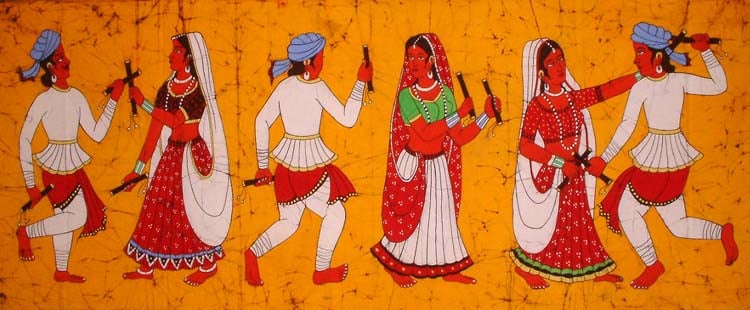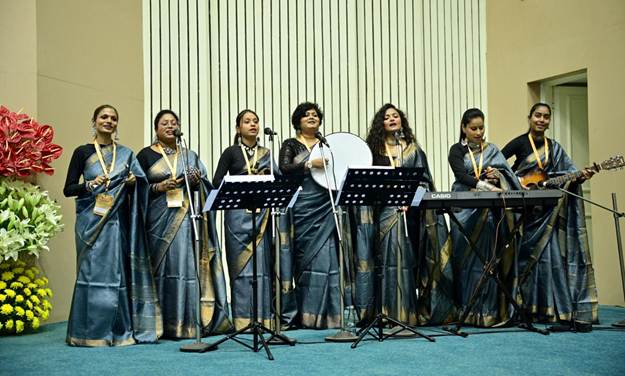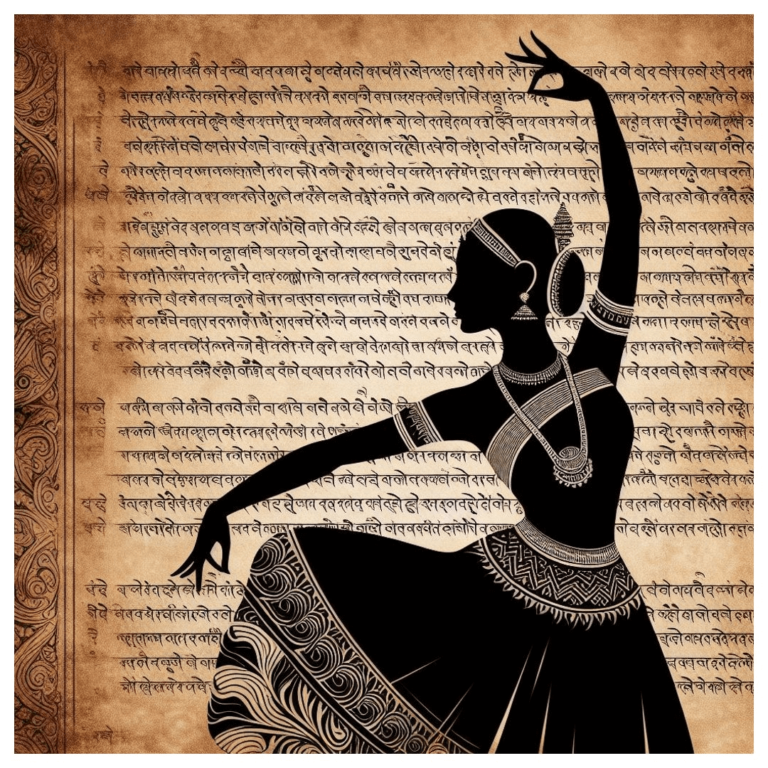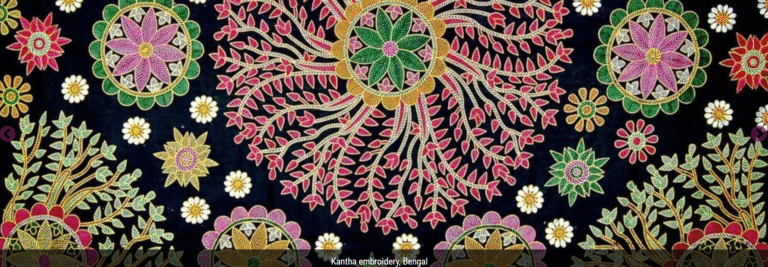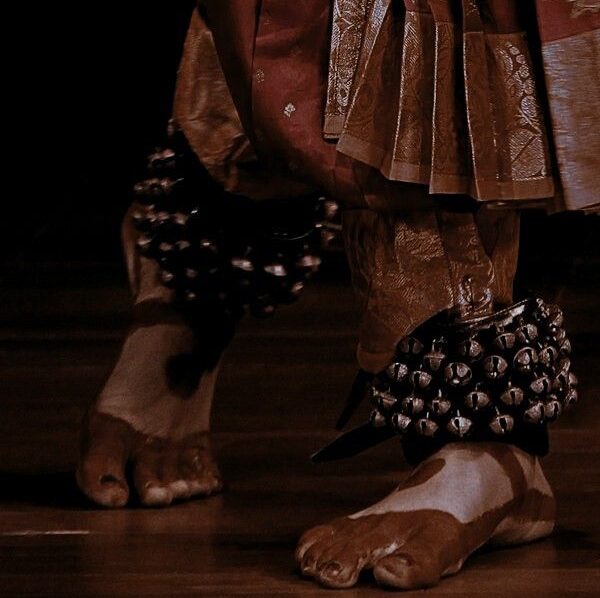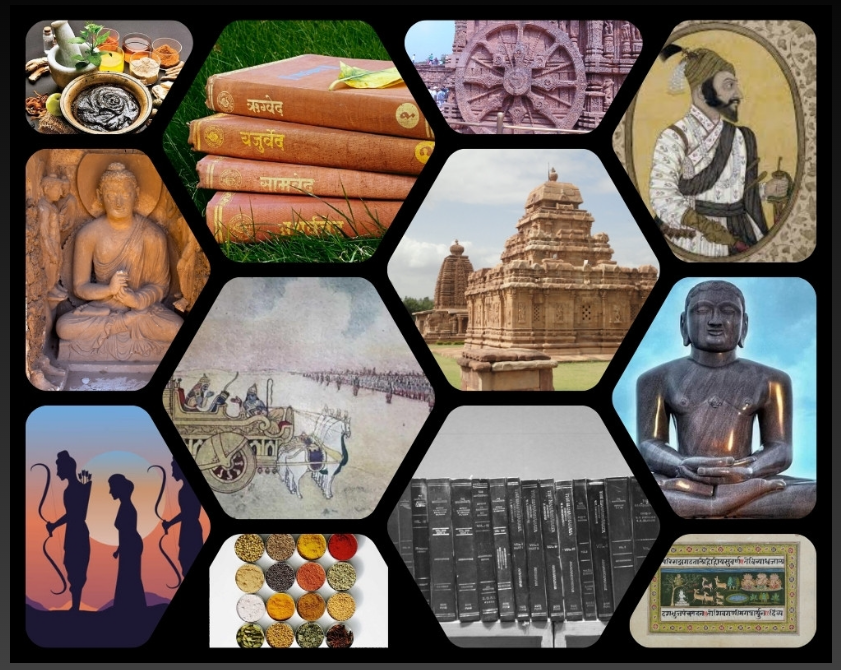
Seeing the rise of Bharat’s cultural adoption and appropriation around the world, we thought of looking for authentic online sources where one can learn about Bharat. There are many outsiders and insiders who have researched and presented their understanding about Bharat’s civilization. From courses at University of Oxford to German Universities to UCLA it has been an ongoing process to understand and interpret the vastness of Bharatiya culture, scriptures, religion, rituals and more. While it is an exciting journey for non-Indian students to learn about India, it is equally saddening to see many Bharatiyas are not aware of their own roots. A few hundred years in the past and most Indians know about Adi Shankaracharya, Babar, Akbar, and then the British but few are aware about the Mauryas and Cholas. The science behind rituals performed is almost defunct too. Here is an article about Indology – the study of Bharatiya Knowledge Systems and top 5 sources where you can learn formally about them.
A prompt to Google’s Gemini AI: What is Indology? It responded that Indology is the academic study of the history, culture, and languages of the Indian subcontinent. It includes a wide range of disciplines like archaeology, history, literature, philosophy, and religion, and focuses on the rich heritage of South Asia, from ancient texts to modern social and political aspects. On the contrary, Indology is also more to do with studying scripts and scriptures than it being limited to Indian works like Vedas. It constitutes the study of South Asian scriptures and not just Indian.
Here are top 5 sources from where you can learn Indology (Degree and non-degree courses)
Here are top 5 sources from where you can learn Indology (Degree and non-degree courses)
Are you a medical doctor, engineer, management professional, artist, politician, startup owner, or a manufacturer? Well, there is a sudden attention many from different fields are giving to this study of Indology. In India, Indology refers to the study of Bharatiya Vidya (Indian Knowledge Systems). It’s exciting to finally understand Bharatiya roots, where did Vedas come from, the science behind daily and festival rituals, and proto historic cultures of India, and of course about how Indian cultures have evolved into traditions over 1000s of years.
If you can relate to the above paragraph and feel a slight pull towards it, then consider studying a Master of Arts from any of the colleges below:
1. Tilak Maharashtra Vidyapeeth (TMV, Pune)
Shri Balmukund Lohia Centre of Sanskrit and Indological Studies (now Tilak Maharashtra Vidyapeeth) is widely recognised as one of the leading centres for higher studies in Sanskrit and Indology. It has been the aim of the Centre since its inception to produce the students having a blend of traditional knowledge and modern approach with sound understanding of the rich cultural past of India. It hopes to maintain its distinct identity as a centre with excellence for learning Sanskrit by offering the updated knowledge to the seeking students through various courses run by the Centre.

MA Indology Course: Tilak Maharashtra Vidyapeeth
2. Banaras Hindu University (Faculty of Sanskrit Vidya Dharma Vijnan, Varanasi)
Sanskrit-Vidya-Dharma-Vijnan-Sankaya was established in 1918 by Pt Madan Mohan Malviya ji in order to preserve and promote the studies of Ancient Indian Shastras, Sanskrit language, and literature with an intention to bring about a fruitful dialogue between the West and the East. One of the significant objectives of this institute is to remove the misconceptions about religion, spirituality, astrology and tantras in the society.
The course is not called Indology, but it is about Indology / Indic Studies.
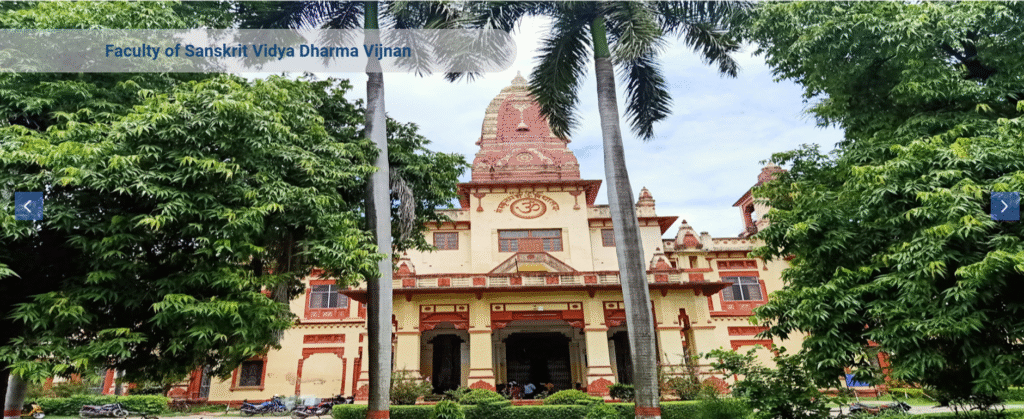
Course link: Faculty of Sanskrit Vidya Dharma Vijnan – Banaras Hindu University, Varanasi, India.
3. Central Sanskrit University, New Delhi
Formerly known as Rashtriya Sanskrit Sansthan, CSU New Delhi is now Deemed to be an University under the Ministry of Education. CSU was established by an act of Parliament. The Central Sanskrit University has the unique distinction of being the largest and the only multi-campus language university in the world. Aware of the fact that Sanskrit and Indic knowledge needs to be preserved and propagated with the right mindframe, The Govt. of India, in pursuance of the recommendations of the Sanskrit Commission (1956-57) constituted a Central Sanskrit Board, which recommended the establishment of a Rashtriya Sanskrit Sansthan. Accordingly, the Sansthan was established on 15th October, 1970 as an autonomous organisation registered under the Societies Registration Act, 1860 (Act XXI of 1860) for the development and promotion of Sanskrit all over the country and abroad. It was fully funded by the Government of India and functioned as an apex body for propagation and development of Sanskrit and assisted the Ministry of Human Resource Development in formulating and implementing various plans and schemes for the development of Sanskrit studies.

Courses list and link: All Courses Here
4. Sree Sankaracharya University of Sanskrit, Kalady (Kerala)
The Sree Sankaracharya University of Sanskrit (SSUS) is one of the pioneering Sanskrit Universities in India in teaching, research and innovations. The University was established in 1993 in Kalady, Kerala. This university has eight regional campuses across Kerala. Most of these campuses are located in rural areas of the State, intending to serve people from disadvantaged backgrounds. More than ninety percent of the students and research scholars in the University are from economically and socially backward communities and families and more than seventy percent are women.
M.A. in Sanskrit is a 2-year postgraduate course in Sanskrit literature. It is a historical Indo-Aryan language and the primary liturgical language of Hinduism, Jainism and Buddhism. It is the official language of the state of Uttarakhand. The course’s syllabus is divided across 4 semesters ranging from the language’s origin through development, and up to now. Sanskrit has been the verifiable and trans-local dialect of scholarly life in South Asia for the longest time now. Sanskrit is the dialect in which South Asian rulers, artists, and religious diviners communicated. It is the world’s oldest dialect. Numerous science and arithmetic writings have been composed in Sanskrit. It is the sacrosanct dialect in Hinduism. The Sanskrit dialect was presented by sages in sacred writings. Individuals have spoken Sanskrit since the start of human civilization.

Course Link: Sree Sankaracharya University of Sanskrit
5. Online Courses of Bhandarkar Oriental Research Institute – BharatVidya.in
BharatVidya online platform was developed using generous funds from Late Shri Rakesh Jhunjhunwala ji. His deep understanding of Bharatiya Vidya (Bharatiya Knowledge Systems) fueled the growth for this platform.
On this online platform, one can find courses on a wide range of topics related to Indology. Ranging from Kautilyasastra to Vedic Maths, Kalidasa to Upanishads and Archeology to History, bharatvidya.in is truly an accessible and learn-at-your-own-pace platform.

The top 4 universities require certain eligibility to undergo the Master’s or PGDM programs, however, the online course is open to all. It’s a matter of pride that once again Bharat’s knowledge is offered to the world and more importantly to Bharatiyas (Indians) who still remain in the unknown waters about their own civilization.

